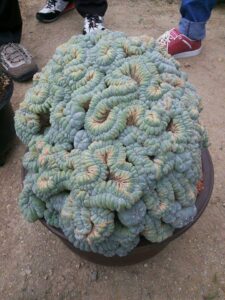Cacti are resilient plants, often synonymous with arid desert landscapes. Their ability to thrive in harsh conditions captivates many horticulturists. However, beneath their tough exterior lies the potential for infections that threaten their vitality. This article will delve into the myriad symptoms indicative of cactus infections, accompanied by illustrative images to enhance understanding. By cultivating an awareness of these symptoms, you can ensure the health and longevity of your beloved succulents.
Understanding cactus infections begins with recognizing the common culprits. Fungal, bacterial, and viral pathogens invade these plants, often leading to a range of health issues. While prevention is paramount, awareness of how to identify symptoms can help avert widespread damage.
Whether you’re an experienced cactus aficionado or a novice collector, understanding these infections can be crucial for nurturing these unusual botanicals back to health.
Examining the Signs: Early Detection of Infection
Identifying the initial signs of infection is critical. Cacti, unlike traditional houseplants, exhibit unique symptoms that may not immediately suggest a pathological issue. The following manifestations warrant close attention:
Discoloration and Staining: One of the most visible indicators of infection can be changes in coloration. Healthy cacti generally boast vibrant greens, blues, and reds, while infected plants may display yellowing or brown spots. This irregular pigmentation often suggests either fungal invasion or environmental stress.
Softening and Rotting: A cactus that feels mushy or squishy to the touch could be battling rot, primarily from overwatering or root infiltrations by pathogens. The consistency changes as the plant’s integrity deteriorates.
Pustules and Blisters: Some infections manifest as raised bumps on the cactus’s surface. When bacterial or viral infections invade, they can cause blister-like lesions. These areas may be unsightly and indicate a deeper systemic issue.
The visual contrast of healthy versus infected specimens serves as a poignant reminder to meticulously inspect your plants regularly. Such vigilance can prevent a minor issue from escalating into a disaster.
A Closer Look at Infection Types: Grasping the Nuances
Infections can be categorized broadly into fungal, bacterial, and viral types, each exhibiting distinct symptoms and requiring specific approaches for intervention.
Fungal Infections: The most prevalent amongst cactus infections, these are typically caused by excess moisture. Fungi thrive in damp environments, leading to root rot and other complications. Areas affected by fungi often manifest as black, mushy spots, or may develop a white, powdery mold on the surface. Removing the affected parts and improving drainage can help restore your cactus health.
Bacterial Infections: Bacterial infections can arise from wounds or natural openings in the plant’s epidermis. Initially, these infections appear as water-soaked lesions, often yellow or brown in color. They can quickly progress to soften and rot if not addressed promptly. Treatment involves pruning away infected sections and applying appropriate bactericides.
Viral Infections: Viral infections are notoriously tricky, often presenting as mottled patterns or stunted growth. Unlike fungi or bacteria, viruses do not respond to conventional treatments. Implementing rigorous sanitation and ensuring any new acquisitions are disease-free can help prevent these infections from taking hold in your collection.
Steps to Take: Effective Treatments for Infected Cacti
Addressing infections is as crucial as identifying them. The steps you take can significantly influence the recovery trajectory of your cactus.
Initial Inspection: Begin with a thorough evaluation of your cactus. Inspect not only the and exterior but also the roots. If the roots appear dark or mushy, immediate action is essential. Remove the cactus from its pot, discard infected soil, and trim away any rotten roots.
Pruning and Sanitation: Pruning requires a precise hand. Using sterile tools, cut away any visibly affected areas. Disinfect your tools between cuts to avoid spreading pathogens. This practice should become a staple in your cultivation routine.
Improving Environmental Conditions: Often, infections result from less-than-ideal environmental factors. Evaluate your watering schedule, humidity levels, and airflow. Ensuring adequate drainage and respecting the cactus’s water needs can mitigate the risk of future infections.
Application of Treatments: Following pruning, consider applying fungicides or bactericides tailored for cacti. These treatments can bolster the plant’s defenses against remaining pathogens while promoting recovery.
Moving forward, remain vigilant. Consistent care practices and close observation of your cacti can lead to more robust plants, capable of withstanding the rigors of disease.
A Mindful Approach: Embracing Curiosity in Cactus Care
As curious plant enthusiasts, it is prudent to remain open to the evolving landscape of botanical care. Diseases in cacti can be enigmatic, but with knowledge and proper diligence, they can be managed effectively. By familiarizing yourself with the symptoms, types, and treatments, you’re not merely responding to adversities but nurturing a deeper connection to your cacti.
Engaging with these enchanting plants offers a rewarding experience. Be both protector and caregiver, equipping yourself with the insights necessary to identify infection symptoms and implement effective treatments. With curiosity and persistence, you can foster the health and beauty of your cactus collection, ensuring these captivating flora can thrive for years to come.





Leave a Comment